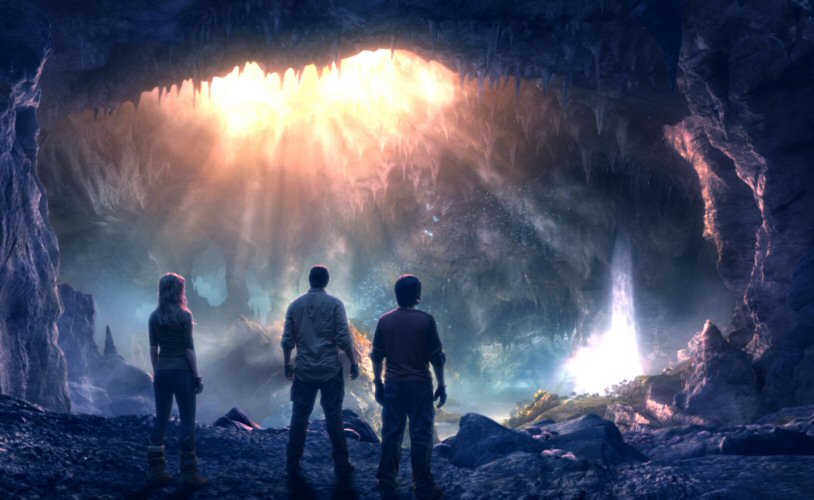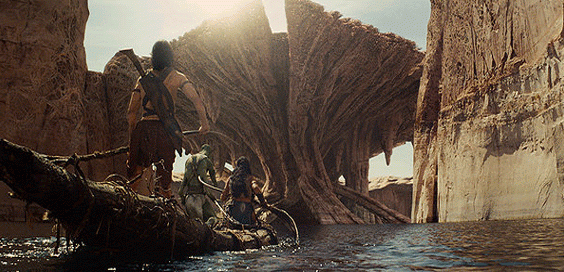Bruce Bennett Research Provocation, Unexpected cinematic journeys and ethnographic spectacle in contemporary 3D films
In its fetishistic preoccupation with novel technology much of the commentary on contemporary 3D films overlooks the composition of the films, evaluating them as more or less successful demonstrations of the spectacular potential of digital stereoscopic cinema. Moving away from this limited frame, I propose that the emerging aesthetic and narrative conventions of 3D cinema are structured by a restricted ideological conceptualization of space. In particular, I suggest that the exoticized spaces of 3D cinema are structured by a racializing discourse within which the perilous journeys undertaken by heroic protagonists are depicted in terms of a hazardous colonial expedition into terra incognita that is uncivilized, primitive and largely uninhabited.
Perhaps the most striking and frequently observed stylistic feature of contemporary 3D cinema is the mobile camera, whether actual or ‘virtual’. This is evident in the tendency towards almost continual, restless camera movement with cameras tilting, panning, arcing, craning, tracking or zooming during a shot, but also, more visibly, in a plummeting, penetrative and technically virtuosic travelling shot, sometimes functioning narratively as a subjective point-of-view shot. The unchained stereoscopic camera exemplifies a central fascination within 3D cinema with space and mise-en-scène. This is a medium-specific property of cinema generally, but it also marks the intersection between the spectatorial experience of 3D cinema and the narratively dispersed pleasures of navigating and exploring the virtual environments of a first-person shooter video game.
A preoccupation with the investigation of narrative terrain is common to many 3D documentaries and fictional feature films. The mobile cinematic ‘eye’ that roams over the real and fantastic spaces depicted in these films is, effectively, an adventurer’s eye that scans, maps, penetrates and, by implication, colonizes these unfamiliar, remote and inhospitable spaces from deep space to the ocean floor. 3D cinema’s cartographic visuality is motivated in part by ethnographic curiosity and archaeological desire. It reproduces an explorer’s gaze.
Implicit in this exploratory optics is a particular conceptual and ideological perspective upon the world: an exoticizing, ethnographic gaze that scrutinizes the world extending beyond the borders of the familiar and the known, emphasising and fetishizing the strangeness and difference of what falls within the stereoscopic frame. This emphasis upon cultural, spatial and historic difference implies a correlative desire to occupy, to chart and to understand. This oscillation of distance and proximity is redoubled and articulated precisely by the spatial illusion of 3D cinema in which physical space appears to recede away from the viewer while certain objects appear to emerge from those spatial depths to brush against the viewer’s body or to poke her in the eye. The ethnographic dimension of this illusory gaze lies both in the camera’s restless mobility as it roams through this receding narrative space, as well as, for many 3D films, in the motivating narrative frame of an exploratory expedition or journey.
There are numerous examples of digital 3D films that depict racialized, primitive others, but the articulation of digital 3D cinema’s ethnographic gaze is also evident in its spectacular treatment of space. The space through which the 3D camera moves is constructed as a novel, richly detailed visual field to scrutinize, navigate and consume. Implicit in the mobility of the camera that probes the diegetic space of the film is a desire both to see more and to observe more closely. It is a gaze that is both actively inquiring and acquisitive, which conflates the tourist’s gaze with the film spectator’s gaze. In this respect, the technological fantasy of immersion and transportation (physically and spiritually) underlying 3D cinema is an over-familiar and reactionary fantasy of unrestricted movement. 3D cinema promises the spectator the pleasures of colonization and domestication of exotically remote spaces in the same way that, for example, the actualités of the Lumière brothers transported European viewers through Europe, Asia, Africa and North America. What remains disappointing and troubling about the current wave of digital stereoscopic cinema is the way in which, despite the medium’s capacity to take us on unexpected journeys through time and space, these films leads us backwards again and again along well-trodden paths through spaces ordered around racialized, imperialist, and strictly gendered hierarchies.



